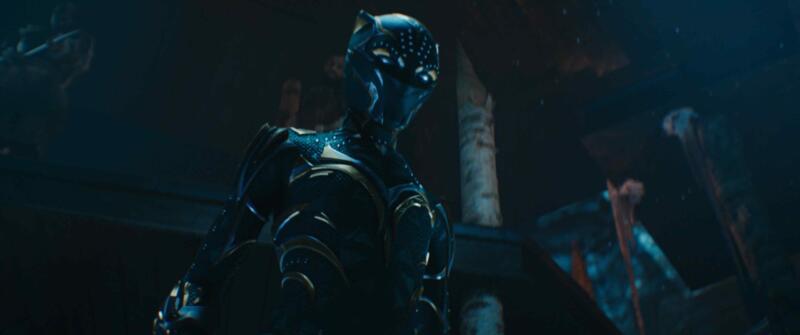When Chadwick Boseman’s shocking death reverberated worldwide in August 2020, as the earth sat frozen in time amidst a once-in-a-lifetime pandemic, the pain was excruciating. A bonafide movie star who had given the world so much was gone almost as quickly as we’d begun to know him. Just two years after the debut of the history-making Black Panther, T’Challa was dead.
While we were able to lean into one another in grief as we absorbed so many other unfairnesses swirling around us, continuing the Black Panther franchise without the Academy Award nominee at the center seemed implausible. For the cast and crew, especially director Ryan Coogler the thought of pressing forward without Boseman was too much to bear. “I was at a point when I was like, I’m walking away from this business,” he told Entertainment Weekly. “I didn’t know if I could make another movie, period, [let alone] another Black Panther movie, because it hurt a lot. I was like, Man, how could I open myself up to feeling like this again?”
Yet, amid his pain, Coogler and the Marvel Cinematic Universe knew just how important Black Panther and Boseman’s legacy is. Scraping his original script for Black Panther: Wakanda Forever, the Creed director began penning a sweeping tribute to the late actor and his character, one that leaned into grief, pain, and the perils of colonization.
Just ahead of the film’s debut, Shadow and Act was invited to view the 2-hour 41-minute film at the Dolby Cinema in New York City. Seated in a plush recliner with snacks and drinks in hand, Dolby Cinema offered a cinematic experience like no other.
Wakanda Forever opens with T’Challa’s death, a gutting and unexpected loss that entraps his younger sister Shuri (Letitia Wright) in an anguished-filled rage that not even her mother, Queen Ramonda (Angela Bassett), can pull her back from. The dynamic colors of Dolby Vision allowed the audience to feel as if they were at T’Challa’s homegoing services. The vibrant whites of Ruth Carter’s costumes and the deep black shine of the character’s casket made the farewell seem even more realistic.
Since this movie centers on the crushing blows of grief, Wakanda Forever doesn’t offer as much action as many MCU fans may have expected. However, Coogler does invite his audience into a brand new world — that of the Talokanil. “We used Dolby Atmos to give our audiences the experience of being immersed in Talokan really strategically,” Coogler said in an interview with Dolby. “We know so little about what’s down there in the ocean… We wanted to respect how dark and frightening it would be. And also this idea of that, that there could be life down there that would be almost alien to us.”
An ancient civilization, the Talokans were born out of the highly coveted vibranium. Like the Wakandans, they’ve remained isolated in their underwater dwelling for centuries. However, the West African country’s decision to expose vibranium to the world has put everything the Talokans have built at risk. It’s something that their enigmatic leader, Namor (Tenoch Huerta Mejia), won’t stand for.
Seeking an ally in his fight against what he calls the surface world, Namor invites the despondent Shuri to visit his civilization. A world made more vibrant by Dolby Vision, and Dolby Atmos allowed the water explosions and sounds of the oceans to reverberate across the cinema. Moreover, the sound was made ever more present when the Talokans used sonic melodies to immobilize their enemies.
Though there is an action-packed climactic sequence at the end that Dolby Cinemas made into a completely immersive experience, Black Panther; Wakanda Forever is much more than a superhero movie.
Instead, it’s a film about the agony of grief, anger, and what it costs to wage war instead of finding common ground.
Black Panther: Wakanda Forever is currently playing at Dolby Cinemas and theaters everywhere.

